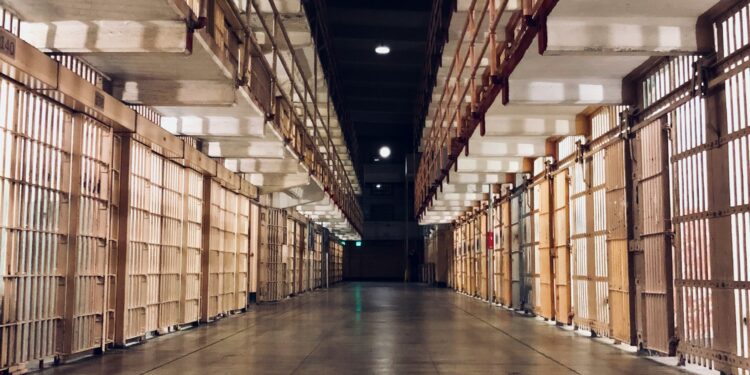Incarceration transmutes civic individuals into regimented subjects whose very identities are corroded by the daily rituals of control. The contemporary criminal justice system, far from rehabilitating, frequently serves as a crucible of psychological deterioration—what scholars term a criminogenic environment. This pernicious milieu intensifies pre-existing vulnerabilities and fosters new forms of distress, yet remains shrouded in public discourse.
The inaugural paragraph must engage both search engines and discerning readers with high-value phrases—criminogenic confinement, mental health impact prison, and domestication through confinement—while offering an unmistakable promise: to unravel how the carceral apparatus inflicts psychic injury beyond the bars.
Introduction: The Architecture of Domestication
Throughout history, confinement has functioned as an instrument of social control, but the post-1960s surge in mass incarceration has intensified its domestication logic. In effect, prisons operate as large-scale laboratories of compliance, conditioning individuals to accept rigid hierarchies and chronic surveillance. Far from fostering genuine rehabilitation, this process systematically erodes autonomy and precipitates enduring mental health crises.
The Criminogenic Environment Defined
A criminogenic environment is one that generates or amplifies criminal behavior and psychological harm rather than mitigating it. According to the American Psychological Association, the typical prison setting—characterized by overcrowding, limited natural light, and constant threat of violence—exerts “deleterious effects on mood regulation and cognitive function” (APA Monitor). Likewise, The Sentencing Project documents that “nearly half of incarcerated individuals exhibit symptoms of mental illness,” illustrating how confinement both reveals and exacerbates psychiatric disorders (The Sentencing Project).
Mechanisms of Psychological Erosion
-
Sensory Deprivation and Hypervigilance. Cells often lack adequate stimulation; windows are tiny slits, and interaction is severely curtailed. This sensory impoverishment fosters anxiety, paranoia, and hallucinations—a phenomenon well-documented in the National Institutes of Health.
-
Rigid Hierarchies and Learned Helplessness. The daily regimen—lockdowns, strip searches, commissary lines—reinforces a power imbalance that encourages learned helplessness, diminishing the individual’s sense of agency. Psychologist Martin Seligman’s foundational work on learned helplessness presaged these outcomes within carceral spaces.
-
Institutional Violence and Trauma. Physical altercations, mistreatment by staff, and threat of solitary confinement constitute chronic trauma. The resulting hyperarousal and intrusive memories mirror post-traumatic stress disorder symptoms in combat veterans.
Incarceration as Domestication
Domestication implies a fundamental transformation: wildness subdued, instincts repressed. Prisons replicate this by training inmates to suppress dissent, spontaneity, and creativity in favor of acquiescence. The nominal goal of “maintaining order” invariably prioritizes predictability over personal growth. Scholars at the University of Chicago argue that this domestication parallels historical processes in colonial institutions, wherein subjugation was rationalized as civilization.
The Mental Health Toll
Research indicates that rates of depression, anxiety, and psychosis among incarcerated populations far exceed those in the general public. A 2021 meta-analysis found that over 70 percent of prisoners meet the diagnostic criteria for at least one mental disorder (Lancet Psychiatry). With limited access to qualified mental health professionals and evidence-based therapies, most inmates languish without intervention. The scarcity of psychiatric care within jails—where the ratio can be as low as one psychiatrist per 2,000 inmates—exacerbates these disparities.
The Counterproductive Cycle of Recidivism
Ironically, the very structure intended to deter criminal behavior perpetuates it. Individuals released from prisons steeped in violence and coercion often struggle to navigate freedom; many revert to environments where aggression and mistrust are the norm. This cycle reflects the criminogenic principle: environments steeped in adversity beget further adversity.
Alternatives to Domestication
To mitigate this dynamic, jurisdictions have begun experimenting with therapeutic jurisprudence and restorative justice. In Norway’s Bastøy Prison, for instance, emphasis on autonomy, vocational training, and community engagement has yielded recidivism rates below 20 percent—far beneath the U.S. average of 76 percent within five years (U.S. Bureau of Justice Statistics). Such models underscore that decarceration, coupled with robust support services, can preserve mental health and public safety.
Policy Imperatives
-
Decompress Overcrowding. Reducing inmate populations through alternatives to incarceration for nonviolent offenses can alleviate sensory deprivation and violence.
-
Expand Mental Health Services. Mandated ratios of mental health professionals to inmates, with telepsychiatry for remote facilities, would address current shortfalls.
-
Reorient Institutional Culture. Training correctional staff in trauma-informed practices can transform prisons from punitive warehouses into rehabilitative communities.
-
Implement Restorative Programs. Victim-offender mediation and community service initiatives foster accountability without compounding psychological harm.
Conclusion: Toward a Humane Paradigm
The prevailing carceral model exerts a corrosive domesticating effect on the human psyche, embedding trauma that outlives the sentence. Recognizing prisons as criminogenic environments obliges a reevaluation of punitive orthodoxy. By embracing evidence-based alternatives grounded in dignity and mental well-being, society can dismantle the cycle of injury and recidivism, forging a justice system that rehabilitates rather than annihilates.















